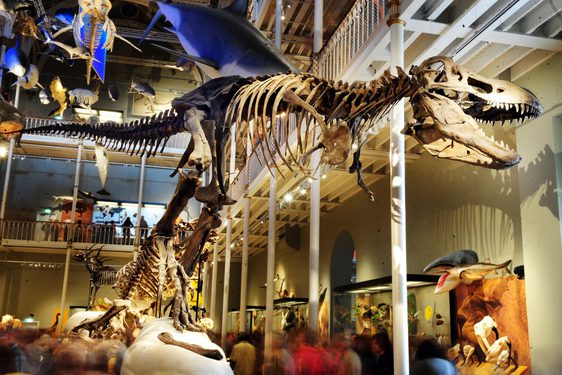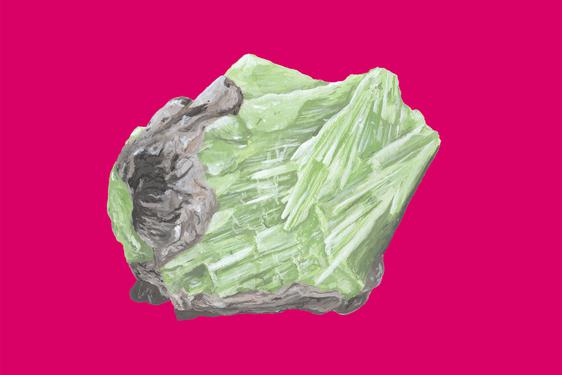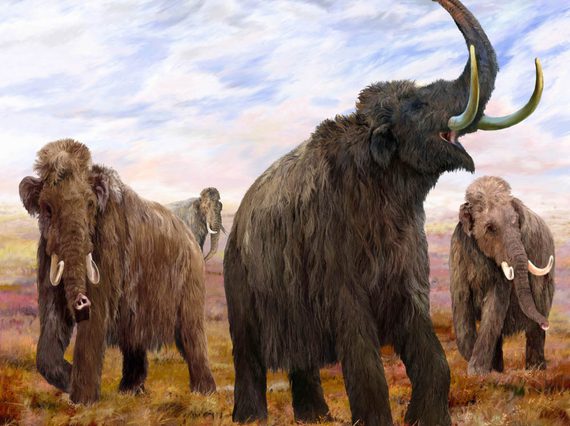
Woolly mammoths in Scotland and beyond
News Story
During the Ice Ages, woolly mammoths roamed vast territories covering Europe, northern Asia, and North America. Tusks in our collection confirm that some mammoths made their home in Scotland. We tell the story of how these tusks were discovered, as well as the mystery of the missing tusk.
Woolly mammoths in Scotland
In January 1817, Robert Brown found a piece of tusk at Greenhill Quarry, Ayrshire under 5.25 metres of clay. On its discovery, the Earl of Eglinton cut the tusk in two and kept one part at Eglinton Castle. He donated the other half to the College Museum of the University of Edinburgh. Nearly a century later in 1915, the Eglinton Castle piece was donated to the Royal Scottish Museum, the forerunner of National Museums Scotland.
Several other pieces of mammoth tusk were unearthed in quarries at Kilmaurs during the early 19th century. Radiocarbon dating has revealed that the tusk found by Robert Brown is around 27,000 years old.
Only three years later, another woolly mammoth tusk was found in a different part of Scotland. On 1 July 1820, workmen, digging the Union Canal on the Cliftonhall Estate to the west of Edinburgh, found a piece of a tusk. Originally it weighed nearly 12 kg and was almost a metre long. Against the wishes of the estate owner, Sir Alexander Maitland Gibson, the workmen sold it for carving, for the price of £2. By the time Gibson had discovered what had happened, it was too late. The tusk was cut in three pieces, two of which were recovered. These pieces were donated to the Free Church College by 1822.
In 1966 the Free Church College Museum closed. At this time, many of the Church's important objects came to National Museums Scotland. Surprisingly, the mammoth tusk had disappeared. It wasn't until 1998 that Hilary Kirkland, who was working at the City of Edinburgh Education Department, found it. She arranged for it to be donated it to National Museums Scotland. The tusk had been cut in half, and to this day one half remains missing.
Radiocarbon dating revealed that the woolly mammoth died on what is now Cliftonhall Estate about 29,000 years ago.
We are looking for information about the missing piece of tusk originally found in Edinburgh. If you know anything about this missing piece, please contact Dr Andrew Kitchener using the information at the end of this article.
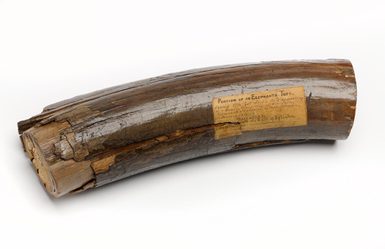

Discoveries in North America
Not long after the Scottish discoveries, tusks were found in another part of the world.
Captain Frederick William Beechey was leading a polar expedition on HMS Blossom. The expedition was navigating the Bering Strait between Asia and North America . The crew found two large woolly mammoth tusks in September 1826 in a cliff of frozen mud at Elephant Point in Eschscholtz Bay, Alaska. They are among the first remains of a woolly mammoth recorded from North America. One of the tusks was recently radiocarbon dated and found to be 46,600 years old.
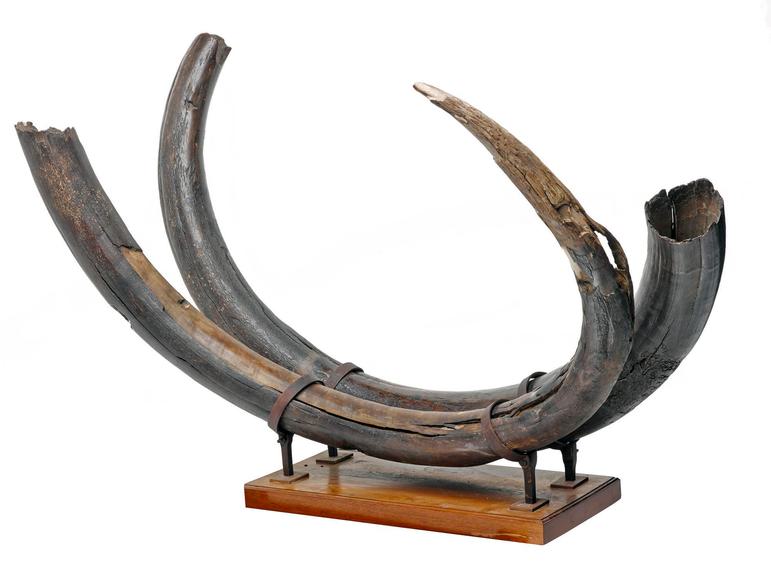
Contact list of staff members
Dr Andrew Kitchener
